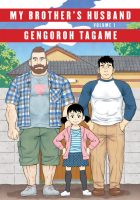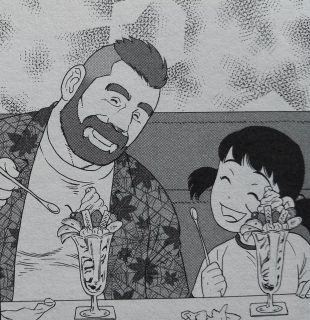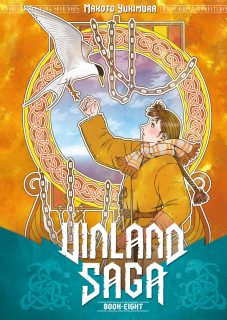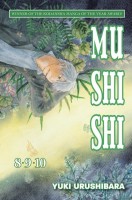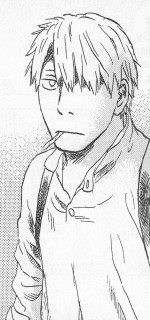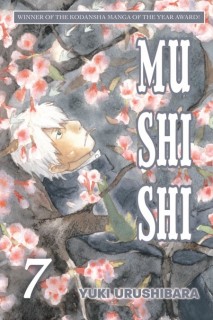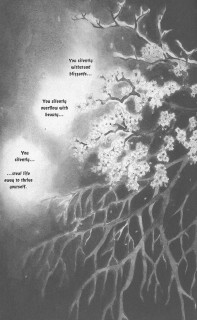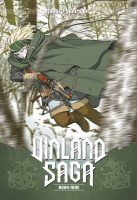 Creator: Makoto Yukimura
Creator: Makoto Yukimura
Translator: Stephen Paul
U.S. publisher: Kodansha
ISBN: 9781632364456
Released: June 2017
Original release: 2016
Awards: Japan Media Arts Award, Kodansha Manga Award
Having read and greatly enjoyed Makoto Yukimura’s near-future science fiction series Planetes, I was very curious to see how he would apply his character-driven approach to Vinland Saga, a manga with a historical setting. The resulting work is phenomenal–in addition to earning multiple awards, including a Japan Media Arts Award and a Kodansha Manga Award, Vinland Saga quickly became and remains one of my favorite manga series currently being released in English. The ninth hardcover omnibus of Vinland Saga was published in 2017 by Kodansha Comics with a translation by Stephen Paul. It collects the seventeenth and eighteenth volumes of the original Japanese series, both of which were released in 2016, in addition to the continuation of “Ask Yukimura,” a section of questions and answers providing further insight into the series and its creation which is exclusive to the English-language edition of Vinland Saga. “Ask Yukimura” was absent from the eighth omnibus, so I was very happy to see its return.
Hild, a skilled hunter, may have saved Thorfinn’s life as he and his companions were accosted by a man-eating bear, but now that she knows exactly who he is, she is determined to take that life from him. Thorfinn has killed countless people during his time employed as a mercenary in pursuit of his own revenge, drastically altering the lives of the victims’ surviving family members and loved ones. It’s a past that continues to haunt him and Hild isn’t the only person to have come to harm due to his actions or who he will have to confront once again. Thorfinn hopes to atone for the death, violence, and destruction he has helped to bring down upon others by establishing a new nation of peace away from the wars, conflict, and struggles for power that plague Europe. But it is a very difficult thing to try to put a stop to a cycle of systemic retribution condoned by society. Thorfinn has convinced others of the worthiness of his cause, but now he must convince Hild who has every right to want him dead.
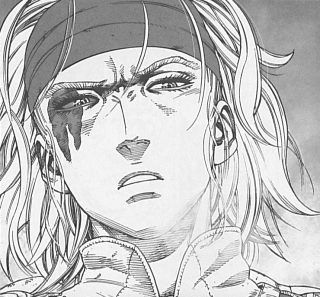 All-consuming revenge is one of the major themes of Vinland Saga. Yukimura explores how such a single-minded pursuit can dramatically change a person, impacting them on a deep, psychological level, and examines how that internalized violence is reflected in and perpetuated by the world at large. Much of Vinland Saga up until this point has been devoted to Thorfinn’s private struggles and growth as he has tried to come to terms with the irrevocable damage that he has wrought not only upon others but upon himself. With the introduction of Hild, Vinalnd Saga turns its focus outward, delving into the long-lasting and increasingly far-reaching effects of Thorfinn’s past misdeeds. Although this isn’t the first time that the series has shown this sort of tragedy, never before has it been made so cuttingly personal in the manga. Hild isn’t some nameless character met passing; Yukimura shows the entirety of Hild’s story–her life before her family was killed in front of her eyes and how she grew to become the fierce opponent who Thorfinn has no option but to face.
All-consuming revenge is one of the major themes of Vinland Saga. Yukimura explores how such a single-minded pursuit can dramatically change a person, impacting them on a deep, psychological level, and examines how that internalized violence is reflected in and perpetuated by the world at large. Much of Vinland Saga up until this point has been devoted to Thorfinn’s private struggles and growth as he has tried to come to terms with the irrevocable damage that he has wrought not only upon others but upon himself. With the introduction of Hild, Vinalnd Saga turns its focus outward, delving into the long-lasting and increasingly far-reaching effects of Thorfinn’s past misdeeds. Although this isn’t the first time that the series has shown this sort of tragedy, never before has it been made so cuttingly personal in the manga. Hild isn’t some nameless character met passing; Yukimura shows the entirety of Hild’s story–her life before her family was killed in front of her eyes and how she grew to become the fierce opponent who Thorfinn has no option but to face.
The parallels between Hild and Thorfinn’s individual quests for revenge are numerous although there are still significant differences and Thorfinn is much further along on his personal journey–while he’s chosen a path of peace, it remains to be seen what choices Hild will ultimately make fore herself. But even though Thorfinn is pursuing pacifism, he continues to be drawn into violent confrontations. A large part of why I find Vinland Saga such a tremendous series is due to the compelling character development that it exhibits, but another reason the manga is so incredibly engaging is the result of Yukimura’s spectacular action and fight sequences. They are exciting as well as meaningful, serving not only to move the plot along but frequently to provide an external expression of the characters’ internal struggles. How they fight and what they are willing to risk goes far to reveal who they truly are and what they value most. Vinland Saga continues to greatly impress me; I’m so glad that it’s being translated and look forward to future volumes with immense anticipation.

